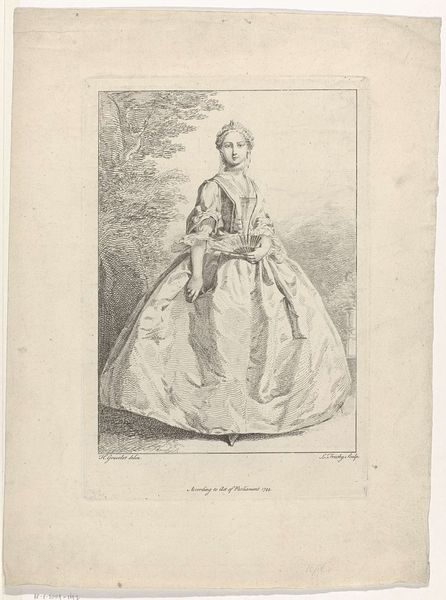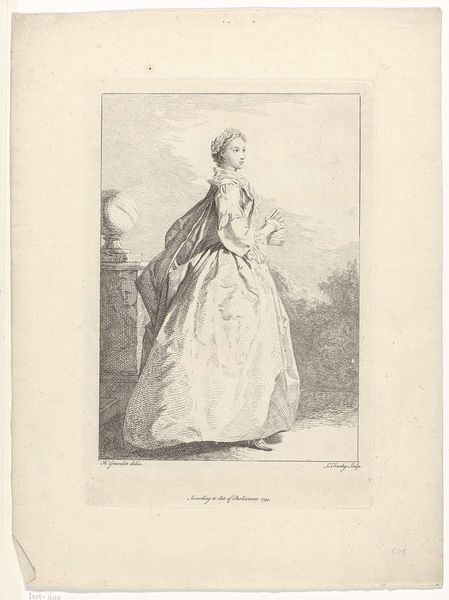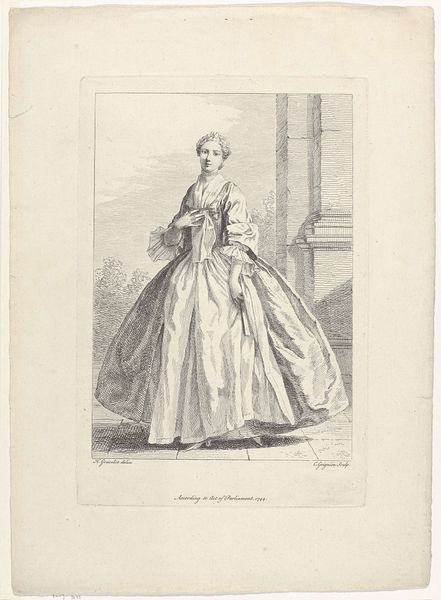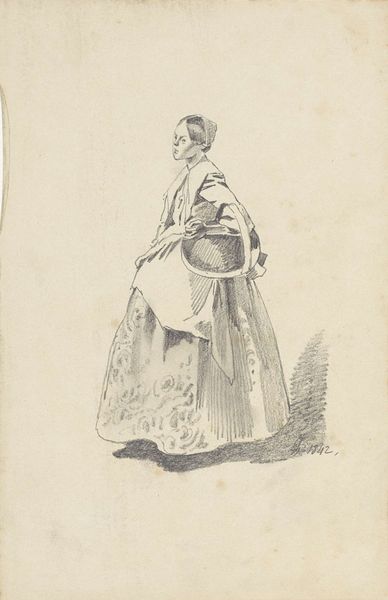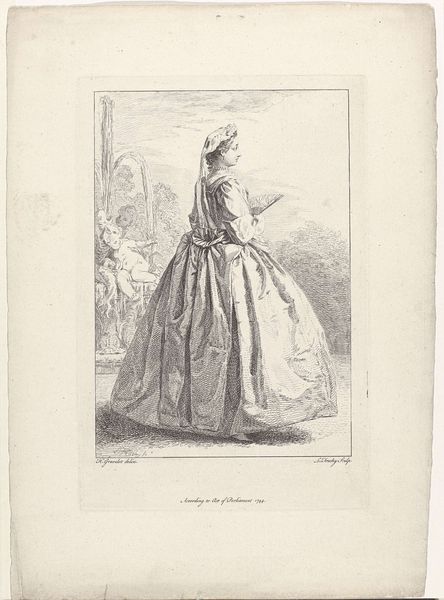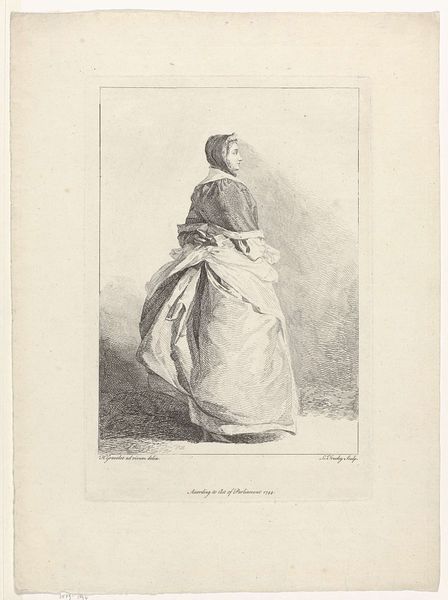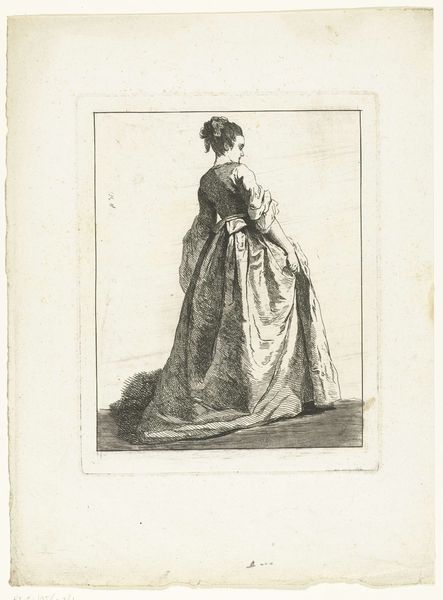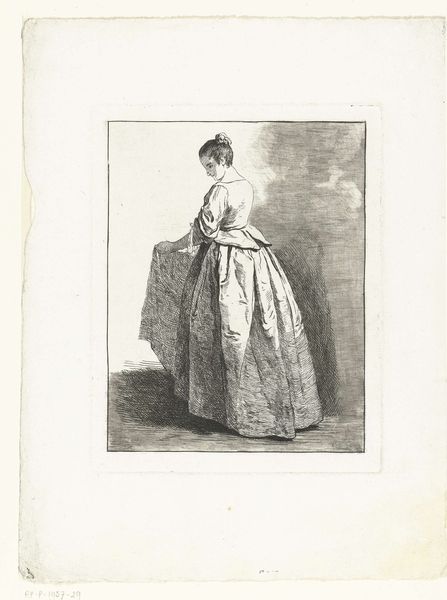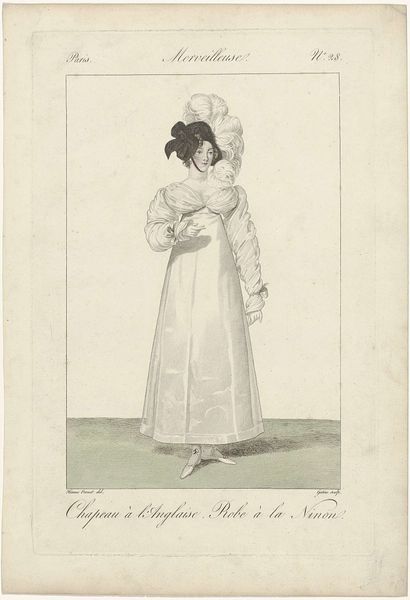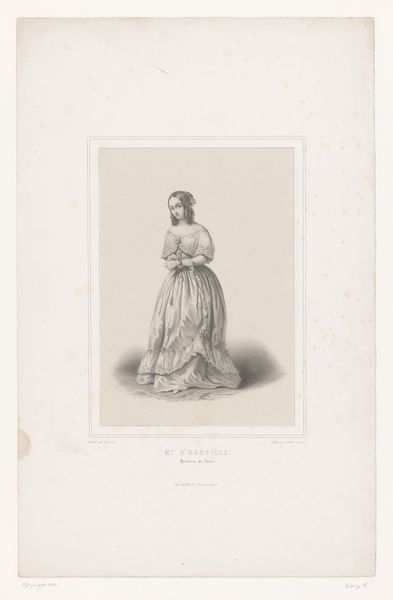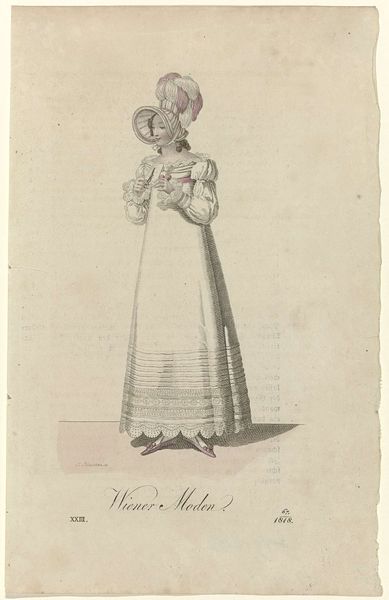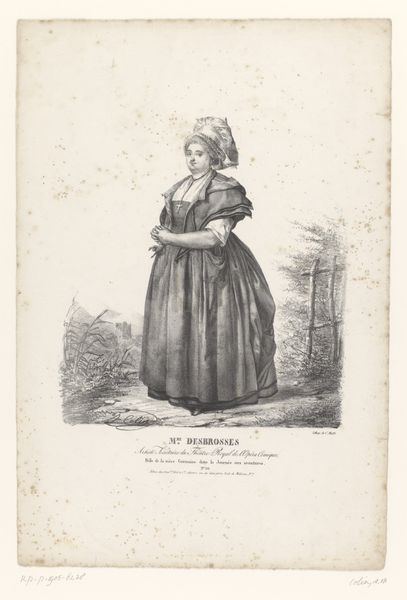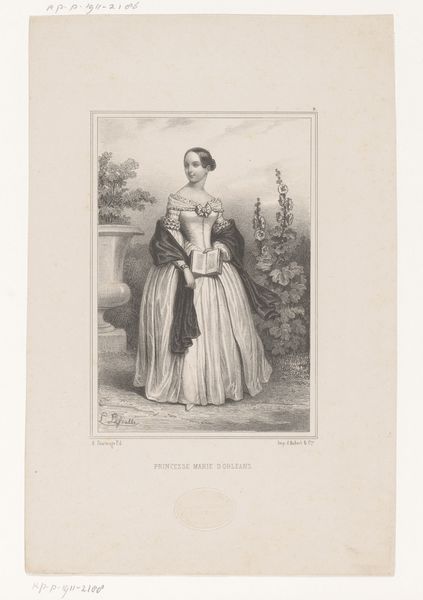
Fashion and Elegance: Fashionable Ladies and Gentlemen of the 1740s 1744
0:00
0:00
louistruchy
Rijksmuseum
print, engraving
#
portrait
# print
#
old engraving style
#
figuration
#
genre-painting
#
dress
#
engraving
#
rococo
Dimensions: height 271 mm, width 181 mm
Copyright: Rijks Museum: Open Domain
Curator: Welcome! We’re standing before "Fashion and Elegance: Fashionable Ladies and Gentlemen of the 1740s," a print dating to 1744, after a design by Gravelot, and engraved by Louis Truchy. It's part of the Rijksmuseum's collection. Editor: My immediate impression is one of constraint despite the elaborate costume. The figure seems caged within that massive skirt, almost immobile. Curator: The artist certainly presents the dress as a structure—almost an architectural form. Observe the precise linework used to create volume, shadow, and the distinct textures of the fabric. Truchy’s engraving skill captures the light reflecting off its folds. Editor: Exactly. But this excess speaks volumes about the social power concentrated in the aristocracy. The dress is not simply attire; it is a signifier of wealth, class, and perhaps even enforced idleness for women of that era. Curator: You highlight a vital tension. Though decorative and visually pleasing, the very strictures of this form underscore a societal hierarchy of fashion as control. Notice, too, how the hat acts as a compositional closure for the figure, furthering the sense of formal control. Editor: It is also impossible to ignore the environmental cost of this sort of artifice. Think of the human labor, resources, and colonial systems required to produce the textiles and maintain such lavish displays. Fashion becomes a charged space reflecting inequality and exploitation. Curator: True, though the primary intent appears to have been aesthetic and celebratory of rococo refinement. Note how the engraver contrasts areas of rich, complex cross-hatching, particularly around the voluminous skirt, with quieter, flatter passages around her upper body and the sketched landscape background. Editor: And yet, these images circulated, further embedding societal expectations around appearance and femininity. Who benefitted most from these representations, and whose experiences are obscured? It makes you wonder... Curator: Indeed. Considering the artwork from both formal and contextual perspectives allows us to engage with its multiple meanings and cultural impact, then and now. Editor: Absolutely, by dissecting both its material construction and the social framework it was constructed within, we create the richest readings.
Comments
rijksmuseum about 2 years ago
⋮
During the early 18th century small series of costume plates reported on the fashion of the day. Women wore the loose-fitting robe volante, also called a ‘sack-backed gown’ in English, over which women sometimes added a short, hooded cloak known as a bagnolette. Men dressed in long coats over a waistcoat and knee-breeches. Pig-tail wigs were adorned with large bows, and tricorne hats were tucked under the arm rather than worn on the head. The two large prints from around 1760 show Parisians out for a stroll. Curiously, the women wear wide paniers (hoop skirts) for their promenade on the ramparts. In the caption underneath, they are condemned as silly slaves of fashion who blindly follow the dictates of the latest trends.
Join the conversation
Join millions of artists and users on Artera today and experience the ultimate creative platform.
